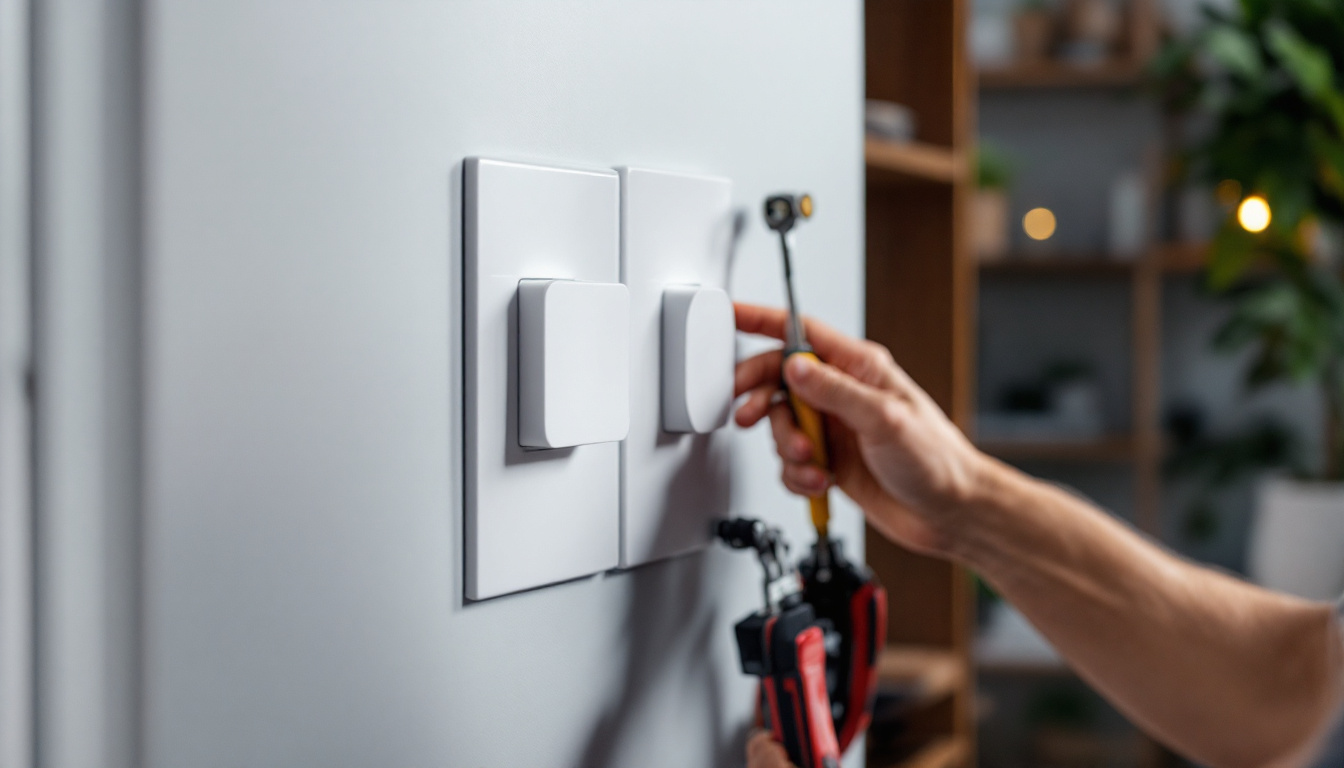
Halide bulbs, often known as metal halide lamps, are a staple in commercial, industrial, and outdoor lighting applications. Their bright, white light and high efficiency make them a popular choice for large spaces like warehouses, stadiums, and parking lots. However, their complexity compared to simpler lighting options means contractors must approach their installation and maintenance with care.
At their core, halide bulbs operate by passing an electric arc through vaporized mercury and metal halides inside the bulb. This process produces a strong, intense light that covers a broad spectrum, closely mimicking natural daylight. This quality is why halide bulbs are favored in environments where color rendering and visibility are critical. The ability of these bulbs to render colors accurately makes them ideal for applications such as retail spaces, where product appearance can significantly influence consumer behavior.
Despite their advantages, halide bulbs come with challenges that can trip up even experienced contractors. Understanding how these lamps function, their limitations, and common failure points is essential for ensuring longevity and performance. For instance, halide bulbs typically require a warm-up period to reach their full brightness, which can be a drawback in situations where immediate illumination is necessary. Additionally, they are sensitive to temperature fluctuations, which can affect their performance and lifespan. Regular maintenance, including cleaning the fixtures and checking for any signs of wear or damage, is crucial to prevent premature failure and to maintain optimal lighting conditions.
Moreover, the environmental impact of halide bulbs is an important consideration. While they are more energy-efficient than traditional incandescent bulbs, they do contain hazardous materials such as mercury, which necessitates careful disposal and recycling practices. Many jurisdictions have regulations governing the disposal of these bulbs to mitigate environmental risks. As the industry shifts towards more sustainable lighting solutions, such as LED technology, understanding the lifecycle and environmental implications of halide bulbs becomes increasingly relevant for contractors and facility managers alike. This knowledge not only aids in compliance with regulations but also helps in making informed decisions about lighting upgrades and replacements in the future.
One of the most frequent issues contractors encounter is using the wrong ballast. Halide bulbs require specific ballasts that regulate the current and provide the necessary voltage for startup and operation. Using a ballast not designed for metal halide lamps can cause flickering, premature bulb failure, or even damage to the fixture.
It’s crucial to match the ballast wattage and type to the bulb’s specifications. For example, a 400-watt metal halide lamp demands a ballast rated for the same wattage and designed for metal halide operation. Universal or mismatched ballasts may seem cost-effective initially but often lead to costly callbacks and replacements. Additionally, the type of ballast—magnetic versus electronic—can significantly affect performance. Magnetic ballasts are generally more robust but less energy-efficient, while electronic ballasts offer better energy savings and a more stable light output. Understanding these differences can help contractors make informed decisions that enhance the longevity and efficiency of their lighting systems.
Halide bulbs are sensitive to oils and dirt on their surface. Handling them without gloves or dropping them during installation can weaken the bulb’s quartz envelope, leading to early failure. Additionally, incorrect mounting or vibration can cause the arc tube inside the bulb to shift or break.
Contractors should always follow manufacturer guidelines for handling and installing halide bulbs. Using clean gloves, avoiding direct skin contact, and securing fixtures properly can prevent many common failures. Furthermore, it is advisable to inspect the fixture’s mounting location prior to installation. Ensuring that the fixture is free from dust and debris not only aids in proper installation but also enhances the overall performance and lifespan of the bulb. Proper alignment and securing of the fixture can also mitigate the risks associated with vibrations from nearby machinery or environmental factors, ensuring stable operation over time.
Halide bulbs require a warm-up period to reach full brightness and color temperature. Turning them off and on repeatedly in a short time can damage the lamp and ballast. Similarly, they need adequate cool-down time before restarting.
Failing to respect these cycles often results in shortened bulb life and inconsistent lighting. Educating clients about these operational nuances is part of ensuring long-term satisfaction with halide lighting systems. Moreover, implementing timers or smart controls can help automate the warm-up and cool-down processes, reducing the likelihood of user error. By integrating these technologies, contractors can enhance the user experience while maximizing the efficiency and lifespan of the lighting installation. Additionally, providing clients with a maintenance schedule that includes periodic checks on the bulbs and ballasts can further ensure optimal performance and reduce the chances of unexpected failures.
Before installing halide bulbs, verify that the fixture and ballast are compatible and in good condition. Inspect sockets for corrosion or damage, and ensure wiring meets electrical codes. Confirm that the ballast matches the bulb’s wattage and type exactly.
Taking the time to perform these checks reduces the risk of early failures and improves overall system reliability. Additionally, it’s prudent to review the manufacturer’s specifications and guidelines for installation, as they often include critical information about the environmental conditions in which the bulbs can operate optimally. For instance, some halide bulbs may not perform well in extremely cold or humid environments, which can affect their longevity and efficiency. By adhering to these specifications, contractors can ensure a longer lifespan for the bulbs and a more satisfied client.
Always wear clean gloves when handling halide bulbs to avoid skin oils transferring to the bulb surface. If contamination occurs, clean the bulb carefully with a lint-free cloth and isopropyl alcohol before installation. Avoid touching the glass directly.
Secure the bulb firmly but gently in the socket, ensuring it is seated properly without forcing it. This prevents mechanical stress that could damage the bulb or socket. Furthermore, it’s essential to educate all team members on the importance of proper handling techniques, as even minor mistakes can lead to costly replacements or safety hazards. Consider providing training sessions or quick reference guides that detail the do’s and don’ts of bulb handling, which can reinforce best practices and enhance overall safety on the job site.
Halide bulbs perform best when installed in the orientation specified by the manufacturer. Some lamps are designed for vertical mounting, while others can be horizontal. Incorrect orientation can cause uneven arc tube wear and reduce lamp life.
Additionally, adequate ventilation around fixtures is essential. Halide lamps generate heat, and poor airflow can lead to overheating, which damages both the bulb and ballast. To further optimize performance, consider the installation environment. For example, in enclosed fixtures, using heat-resistant materials or incorporating cooling fans can significantly enhance airflow and prolong the life of the lighting system. Moreover, regular maintenance checks should be scheduled to clear any dust or debris that may obstruct ventilation, ensuring that the fixtures operate efficiently and safely over time.
Halide lamps and fixtures should be inspected periodically to identify signs of wear, corrosion, or dirt buildup. Dust and grime on the bulb or fixture can reduce light output and cause overheating.
Cleaning fixtures with appropriate materials and methods helps maintain optimal performance. Replace bulbs showing signs of blackening or flickering promptly to avoid fixture damage.
Flickering or color changes in halide bulbs often indicate ballast issues or lamp aging. If flickering occurs, check for loose connections, ballast compatibility, and bulb condition.
Color shifts, such as a blue or green tint, suggest the lamp is nearing the end of its life. Replacing bulbs before they fail completely prevents sudden outages and ensures consistent lighting quality.
When a halide bulb fails, it can do so in several ways: sudden burnout, cycling on and off, or gradual dimming. Identifying the failure mode helps pinpoint whether the bulb, ballast, or fixture is at fault.
Contractors should have access to quality replacement bulbs and ballasts and be prepared to troubleshoot electrical issues. Keeping detailed records of installations and maintenance can also assist in diagnosing recurring problems.
While halide bulbs offer excellent light quality and brightness, they are less energy-efficient than newer lighting technologies like LEDs. Many facilities are transitioning to LED systems that mimic halide light characteristics but consume less power and require less maintenance.
Lighting contractors should be aware of these trends and advise clients accordingly. In some cases, retrofitting existing halide fixtures with LED equivalents can provide cost savings and reduce environmental impact without sacrificing lighting quality.
However, halide bulbs remain relevant in certain applications where their specific light spectrum or intensity is required. Understanding when to recommend halide versus LED solutions is a valuable skill for contractors aiming to deliver the best lighting outcomes.
Halide bulbs demand attention to detail in selection, installation, and maintenance. Avoiding common pitfalls such as incorrect ballast use, improper handling, and neglecting operational cycles ensures these lamps perform reliably and efficiently.
For lighting contractors, mastering halide bulb systems means fewer callbacks, happier clients, and a reputation for professionalism. Staying informed about evolving lighting technologies and best practices will keep contractors ahead in a competitive market.
Ultimately, the key to success lies in combining technical knowledge with practical care, delivering lighting solutions that shine bright and last long.
Ready to elevate your lighting installations with the highest quality halide bulbs? Look no further than LumenWholesale, where we provide contractors with spec-grade lighting solutions at unparalleled wholesale prices. Our commitment to cutting out the middleman means you get the best value for your investment, with free shipping on bulk orders to maximize your savings. Trust in our industry-standard selection to bring reliable and efficient lighting to your projects. Don’t compromise on quality or price—choose LumenWholesale for your lighting needs and experience the ultimate in affordability and convenience. Visit us now at Wholesale Lighting at the Best Value and make the smart choice for your business.

Discover the insider tips and expert techniques lighting contractors use to master the art of outdoor illumination.

Discover the different types of dimmer switches and get answers to lighting contractors’ most common questions.

Discover the transformative power of pendant light fixtures in this insightful article, featuring real-world success stories from lighting contractors.

Discover innovative strategies to boost profitability in lighting installations with our comprehensive guide on lightbulbs.